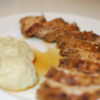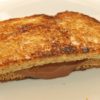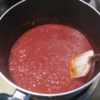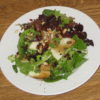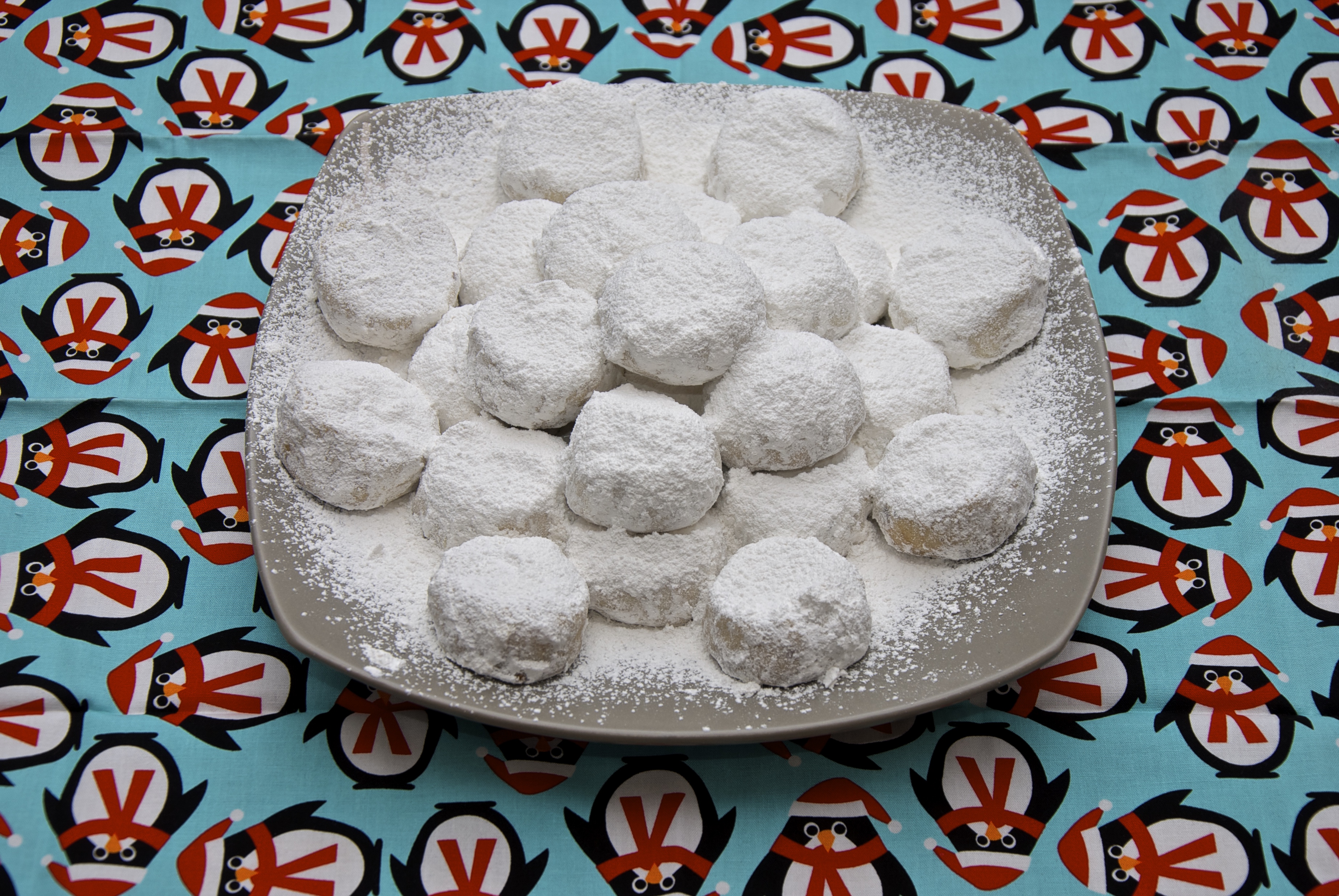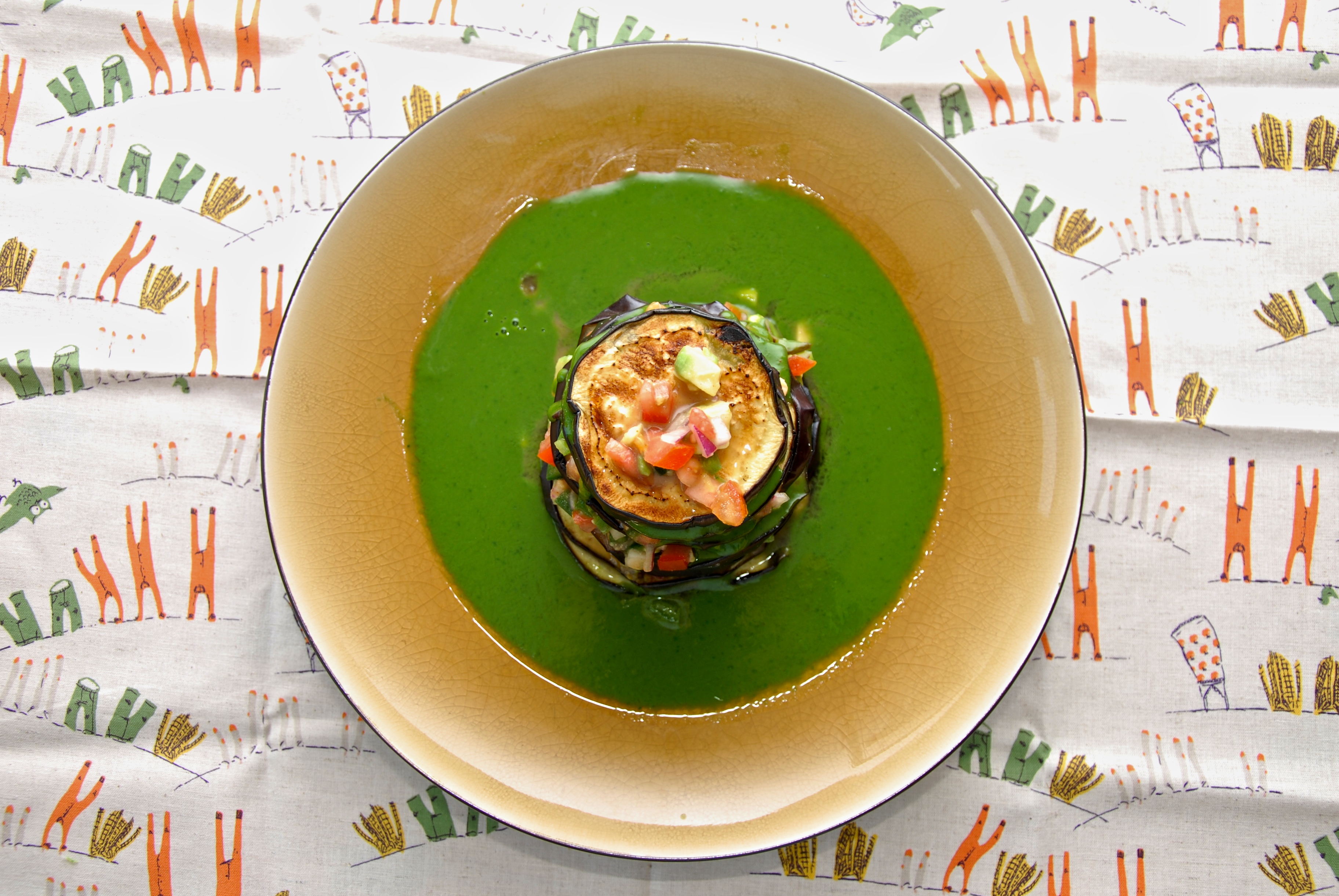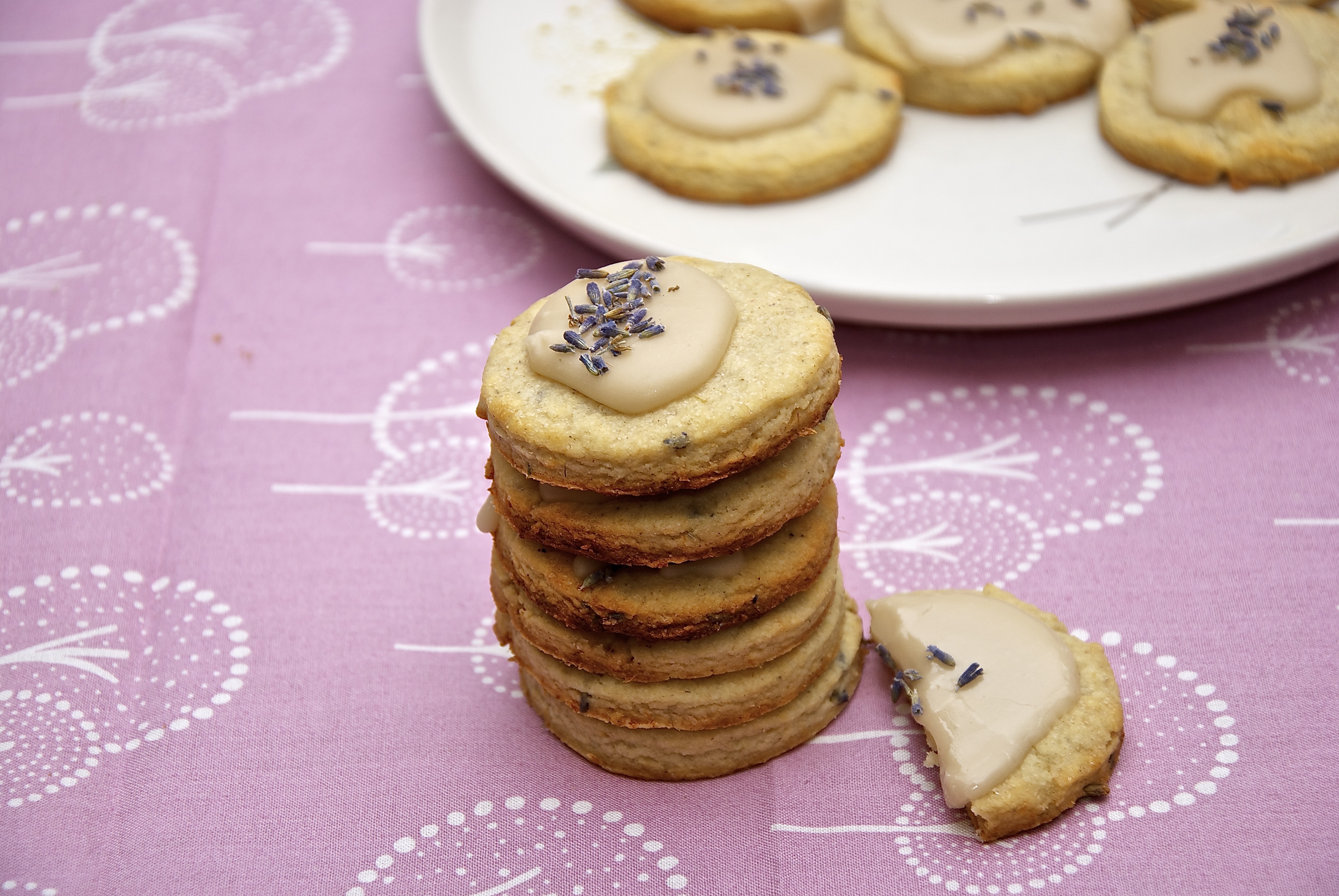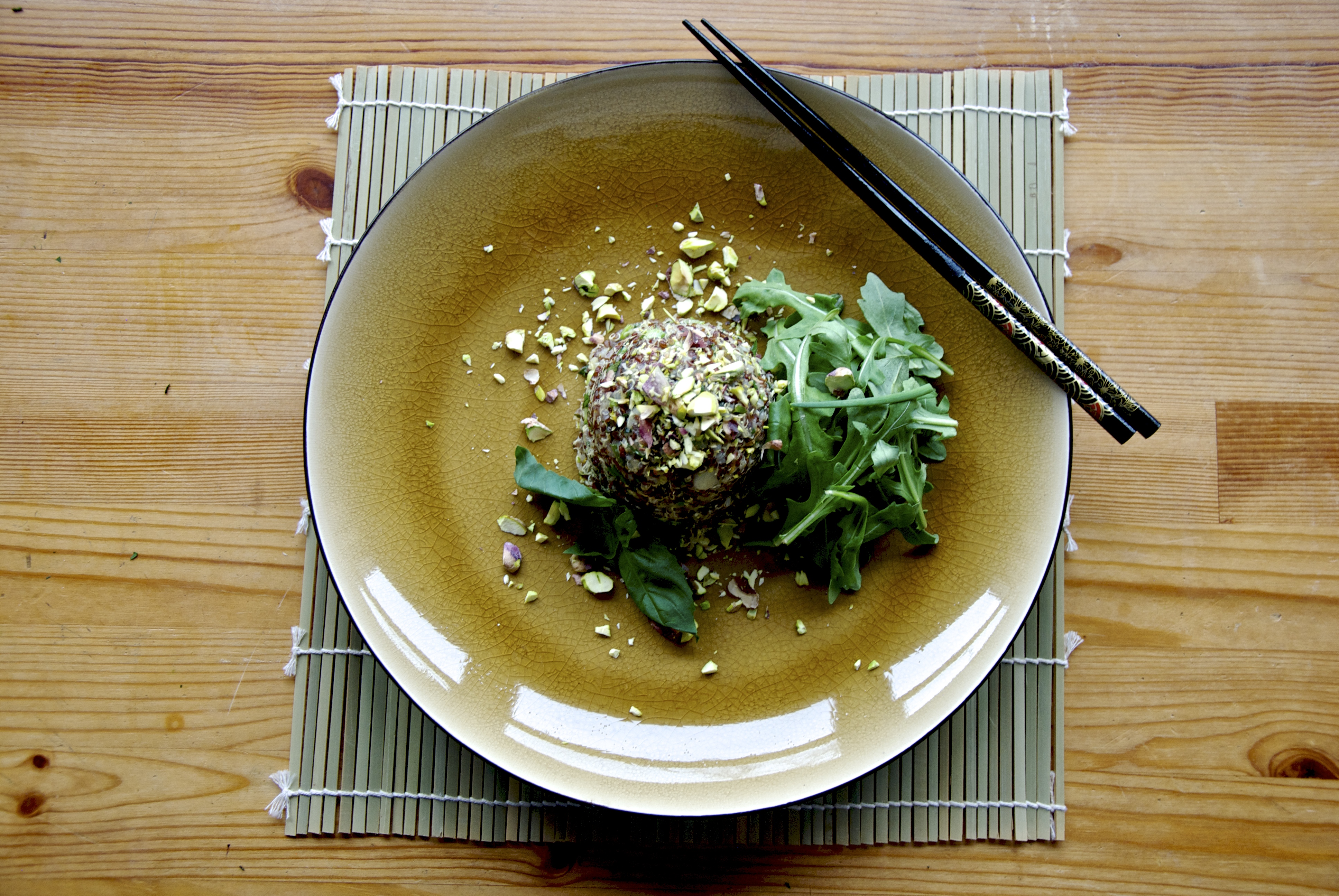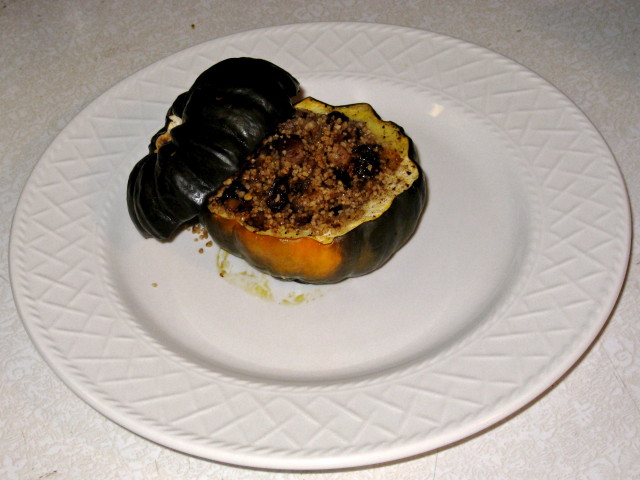

Acorn squash (Cucurbita pepo) is a winter squash with distinctive longitudinal ridges and sweet, yellow-orange flesh. The most common variety is dark green in color. However, newer varieties have arisen including Golden Acorn, for its glowing yellow color, and some that are white. They can also be variegated (multi-colored). As the name suggests, its shape resembles that of an acorn. It is also good for winter storage, keeping several weeks in a dry location such as a cellar. Acorn squash are easily grown. Seeds are started after all danger of frost is past and the soil is warm or within 3-4 weeks before the predicted last frost date in the area. Seeds directly sown are placed one inch deep, 5-6 to a hill; hills are 6 feet in all direction from other hills. Roughly 85 days after germinating, acorn squash are ready to be harvested. Curing takes a week to ten days in a sheltered area outside, or a warm dry place such as a garage, protected from frost. As you can see from the nutrition data table, it is very nutritious with very few calories and rich in fiber. It is not as rich in beta-carotene as other winter squashes, but is a good source of dietary fiber and potassium, as well as smaller amounts of vitamins C and B, magnesium, and manganese.
In this recipe the squashes are serving as vessels to stuff them with simple ingredients most of them found in the dark corners of the refrigerator, and the pantry.

For this recipe we will need:
- 2 acorn squashes (4-5 inc in diameter
- 1/3 of cup of cuscus
- 1 sausage (any kind will do, but preferably a sweet one to pair better with the sweet flesh of the squash)
- 1 tsp cumin
- 1 glove of garlic
- 1 medium onion
- 1 pinch of red pepper flakes
- 1 tbsp olive oil
- 1 tbsp balsamic or sherry vinegar
- few raisins (optional)
- salt
- pepper
Looks fancy but it is simple. Feel to substitute the ingredients as you like. Accept the couscous.. You can still substitute that, but you should be more careful, I will discuss that later.

Start by washing the squashes. Soap and water please… Don ‘t be skimpy on this.
Although there are many ways to cut a squash and many knives for that purpose, every time I am cutting a large, bulky, hard vegetable I reach for my…

serrated knife. Not only it is long to get the job done with few slices, but the teeth will grab a hold on it, and it is like literary sawing through it.

Take the knife and cut the top part off, from about an inch from the top.

With a high precision knife (yeah fancy term, for a knife, but it is actually needed to result in a clean, precise cut that will serve as a base.

With a large spoon empty the seeds from the main part of the squash and from the lid. You can clean them for the strings they are attached on, and roast them. Use the spoon to carve out some of the flesh to make the opening a little bigger. Don ‘t toss away the carved parts. They will be part of the stuffing.

Place them on a baking pan, drizzle some olive oil and salt and…

pepper them.

Place the in hot oven at 375 F and let ‘s turn our attention to the stiffing. Oh yeah this is an oven thermometer. I am a geek, ok? Geez…

Take the end pieces of the squash and hollow them by scrapping all that lovely squash. On the upper left corner you can see the carved parts of the squash flesh.

Take the onion peal it…

…cut it lengthwise and cut it radially. I don ‘t have a picture of that cut, but we all have imagination right? Ok. Well follow those green lines on the top of the onion, and cut towards the center. This is also called as frenching or french cutting an onion. A nice useless piece of information to know.

Then just slice it. You can see in this picture the radial cut of the onion.

Turn our attention to the squash parts we extracted.Chop the with the knife, not required to go really fine or anything, just chop them.



Take the sausage and cut the casing so you can take it of. Some of the sausage will come off with the casing but it is not really a big deal.

At the end you should have something like that. Chop it as well…

Take your pan over medium high heat and add the rest of the olive oil.

Throw in there all of the ingredients we chopped, but the squash.

Stir till they start browning,

At this point go ahead and add the squash parts and the raisins.

Add the red chili flakes and the cumin. Add as much as you like from both ingredients.

Now get 1/3 of cup of couscous, and add it in the mix. A word on that. Couscous is the one thing you cannot substitute easy in the dish. In this case it will be cooked with the moisture of the baked squash. If you ad another ingredient, like rice or grain, make sure it is cooked before you add it, or more precisely 80-90% cooked. If not it will just going to be uncooked in the final dish. That ‘s why I like couscous, it plays well in roles that have little moisture.

Take the pan of the heat, and add the balsamic vinegar.

Let it cook down with the residual heat of the pan. A word on this step: so far we have a lot of sweetness and a lot of spiciness. We really need to bring the dish together with some acidity. Balsamic vinegar has the added sweetness that really bridges the flavors. Alternatively you can try some orange juice.

Take the pan of the fire, and add the couscous. If you were adding rice, add the rice, while the pan is over medium-low heat, add equal amount of water. This will do the required cooking.

Take the little babies of the oven. They should be a little wringles and dry on the surface but, still mostly raw. Yeah my oven is dirty. I know…

Stuff them with the mixture. Don ‘t pack it tight and more importantly don ‘t try to fit it all in there. Chances are there will be some left over. And put them back in the oven. As you see I cut a square part of every lid, as a vent hole. No.. not really that part of the squashes was cracked and moldy. But it served the purpose of a nice vent hole.
Put them back for 20-30 minutes to finish of cooking. The meantime as a chef you worth a little treat.

Take some of the leftover stuffing add some water or broth or stock and finish it of on a medium heat. In just a mater of minutes you will have…

A nice couscous spicy sweet treat to munch on till the baking is over.
In 30 minutes try for donness with a fork.

I am sure you heard fork tender, which is basically the state where a fork can pierce the hard shell, without much of a resistance. Once done remove them and let cool.

Serve in room temperature. It is delicious. Try to get some of the stuffing and the squash in every bite… and enjoy.
Don ‘t limit yourself with this stuffing. You can stuff it with whatever you have around and whatever you feel like. Heck once I stuffed a squash with another squash and feta. Feta by the way is the one cheese, that is paring excellent with all squashes. But that s a complete different post.


